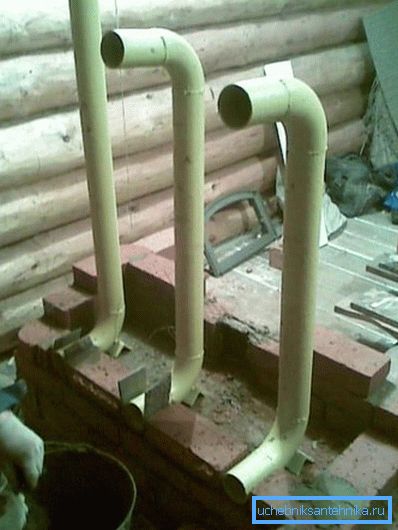Brick stove with water heating in the house
Questions of heating the home have always interested our compatriots, because this is almost the fundamental factor of comfort. Of course, there are many different offers on the market now, but not everybody can afford electric boilers, and there is no gas everywhere. Against such a background, a brick stove with water heating with its hands folded is the optimal solution.
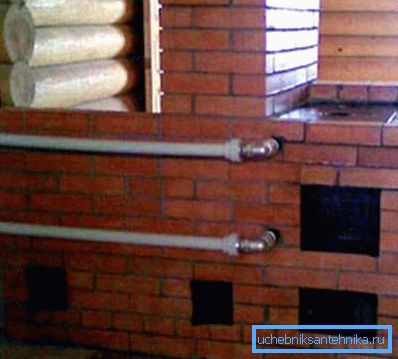
Features of brick ovens
All types of structures of this kind have been known for several hundred years and have long proven their reliability. But giving preference to such heating you need to weigh the pros and cons.
What is good such an option
- If you try to heat the house with a conventional solid fuel stove, then on average 1m? constructs able to heat 30m? Square standard house with ceilings up to 3m. Accordingly, it turns out that the larger the house, the more you need to build a stove. The system, which has built-in water registers, generates 2.5 times more heat and can be quite modest in size.
- If the instruction for laying structures was performed in accordance with all requirements, then the furnace will serve faithfully for more than a dozen years. Preventive inspection and cosmetic repairs under the power of any owner, in contrast to the version with a solid fuel boiler.
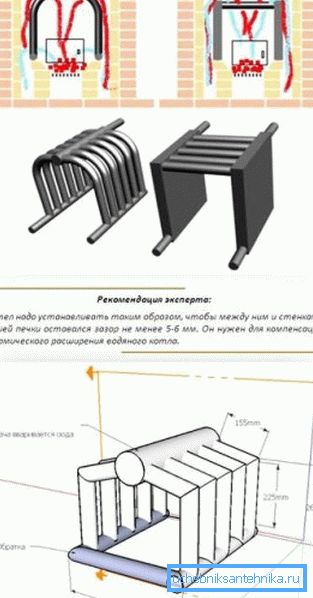
- At the moment there are several common projects, if a Russian stove is not suitable for every room, plus its installation requires high qualification, then Swedish or Dutch brick stoves with water heating with their own hands, with a great desire, can be folded.
- Another positive aspect of such heating is that in this case it is not necessary to build complex multichannel structures, if there is no question of the presence of the frying surface, then such a system can be mounted on the basis of a conventional fireplace.
Important: if the maximum efficiency of a traditional brick construction does not exceed 50%, then using good registers, competent piping and embedded in the circulating pump system for heating, efficiency can reach up to 85%, which is quite comparable with modern solid fuel boilers.
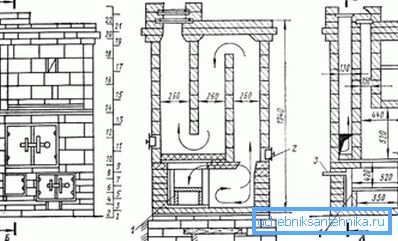
- Not the last role is played by the price of building materials and fuel.. The design itself can be folded from the material remaining after the construction of the house. As for fuel, firewood, coal or briquettes do not belong to extremely expensive types and are quite accessible to almost everyone.
- Most of the structures are equipped with a frying surface and an oven that allows you to cook food in parallel.
System flaws
- To launch the system at design capacity, it will take time, unlike electrical units, to warm up the brick walls of the structure and the heat carrier in the pipework will take at least half an hour.
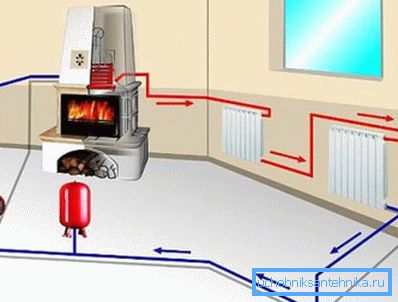
- If we compare with solid fuel boilers of comparable capacity, then the dimensions of such structures will be much larger. Plus, they should be installed, as a rule, in the center of the dwelling, which takes a lot of usable space.
- Any solid fuel heating system provokes the formation of a sufficiently large amount of dust. As you do not try, but you will need to clean the room where the brick oven is installed much more often.
- All constructions of such a plan are objects of increased fire danger. They cannot work offline. In addition to the likelihood of a fire, there is still the danger of the spread of carbon monoxide in case of improper operation or boiling of the coolant in the system, which is also fraught with unpleasant consequences.
System Setup Tips
In essence, such structures are the progenitors of modern solid fuel boilers. But, unlike them, heat transfer is carried out not only by piping and a radiator system, but also from the furnace itself.
Plus it is much easier and cheaper to assemble brick stoves with water heating by yourself than to install a solid fuel boiler.
A few words about the register
A metal register can, without exaggeration, be considered the heart of the entire heating system. This design is installed directly in the furnace and is responsible for the heating level of the coolant.
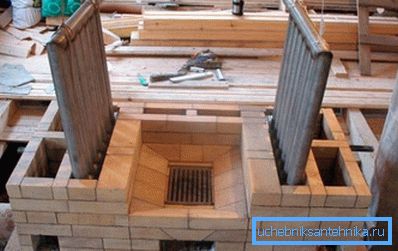
The simplest and most affordable option is to install a rectangular metal tank directly into the furnace. Such a tank is made of heat-resistant steel, with a thickness of 3 mm or more, most often of stainless steel.
To heat a house at 200m? A tank 750 mm long, 500 mm wide and 300 mm high is enough. The output is done on top of the structure, the return pipe cuts into the bottom of the tank.
Registers welded from stainless pipe with a wall thickness of at least 3 mm are considered more functional. The heating area in this case increases by several times, hence the efficiency of the system is obtained disproportionately higher.
Tip: it is not difficult to find iron registers in the market now; in the opinion of most specialists, they are the best option. First of all, cast iron is not susceptible to corrosion, practically does not burn through and most importantly, this material is considered to be the best heat accumulator.
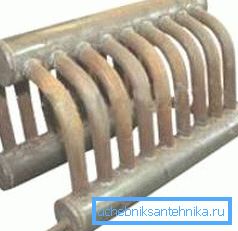
During installation, attention should be paid to the location of the register. The more contact with the fire, the better the performance.
But at the same time, regardless of the tank configuration, between it and the walls of the furnace there should be a compensation gap of at least 5 mm. Otherwise, during heating, the metal will begin to expand and the walls of the furnace will crack.
Membrane tank
To mount the register in the firebox is only part of the case, it is equally important to properly arrange the pipe layout. Any heating system built on this principle should be equipped with an expansion or membrane tank. As a rule, it is installed on the return pipe, but it does not matter, some masters prefer to mount it at the highest point of the system.

In a system with natural circulation of the coolant, its function is performed by an ordinary metal container. But now, in most cases, the owners prefer to install circulating pumps. In such a system, it is desirable to install a real membrane tank.
The device is a sealed metal container, in the upper part of which there is a valve. Air is pumped through the valve, creating an overpressure in the system. When the temperature rises, the heat carrier expands proportionally, squeezing the excess into the membrane tank. In the process of cooling, the air that pushes against the membrane compensates for the pressure drop in the system.
Some moments of laying the stove
As mentioned earlier, brick stoves with water heating can be folded with your own hands, but if you are not confident in your abilities, it is still better to invite a specialist.
Although in any case, there are general rules that violate is not desirable.
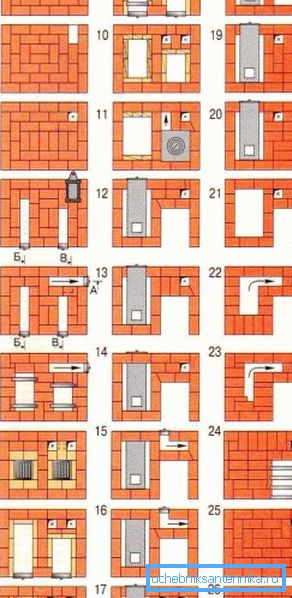
- All brick kilns are made of solid red brick. Hollow brick is not advisable to use even for cladding. The fact is that hollow blocks are a heat insulator, and in this case it can only harm.
- If it is supposed to heat with wood, then the fire chamber can be folded from the usual burned brick. But if there is a likelihood of using high-grade coke or hard coal, for example, anthracite, then we would advise you to fold the firebox from a special fireclay brick that is used to build blast furnaces.
- No need to save on the thickness of the walls, in addition to the weight of the furnace itself, this will also add the load from the registers.
- And yet, any stone structure needs a reliable foundation, as for the furnaces, here the foundation should be laid separately and in no case be in contact with the common foundation of the house, the minimum distance between them should be 50 - 100 mm.
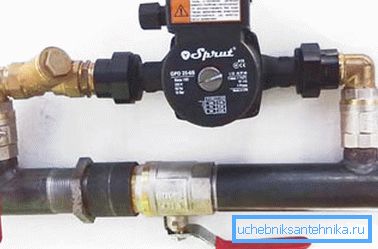
The video shows some of the subtleties of the installation system.
Conclusion
In this case, we talked about heating the house. But it is not superfluous to note that if a metal water tank is inserted into the system in parallel, it will play the role of a passive boiler, as a result of which hot water for domestic needs will appear in the house.
